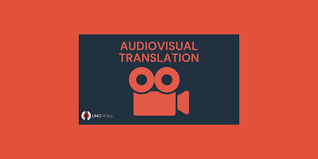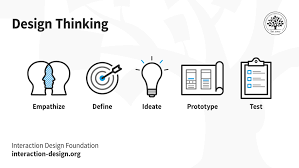Audiovisual: Enhancing the Way We Experience the World
In today’s fast-paced world, where information is constantly being shared and consumed, audiovisual technology plays a crucial role in enhancing our experiences. From the captivating visuals of a movie on the big screen to the immersive sound of a live concert, audiovisual elements have the power to transport us to new realms and create unforgettable moments.
Audiovisual, as the term suggests, combines both auditory and visual components to deliver a holistic experience. It encompasses a broad range of mediums, including film, television, music, presentations, virtual reality, and more. The integration of these elements allows us to engage with content in ways that evoke emotions and stimulate our senses.
One of the key benefits of audiovisual technology is its ability to convey messages effectively. Whether it’s a business presentation or an educational video, combining visuals with sound helps capture attention and enhance understanding. Studies have shown that people are more likely to retain information when it is presented in a multimedia format. The combination of images and sound creates a multi-sensory experience that aids in comprehension and memory retention.
Moreover, audiovisual technology has revolutionized entertainment. With advancements in high-definition displays and surround sound systems, watching movies or playing video games has become an immersive experience like never before. The vivid colours, sharp images, and realistic sound effects transport us into fictional worlds or allow us to witness real-life events from the comfort of our homes.
Audiovisual technology also plays a significant role in various industries such as marketing, advertising, events management, education, healthcare, and more. Businesses utilize audiovisual tools to communicate their brand messages effectively through engaging videos or interactive presentations. Events are brought to life through visual projections and carefully synchronized sound systems that create an atmosphere that captivates attendees.
In education settings, audiovisual aids are used to make learning more interactive and engaging for students. Complex concepts can be simplified through visually appealing graphics and animations, while audio elements help reinforce key points. This approach not only enhances understanding but also fosters creativity and critical thinking among learners.
Additionally, audiovisual technology has paved the way for virtual communication and collaboration. With the rise of video conferencing tools, people can connect with colleagues, friends, and family across the globe without leaving their homes. This has transformed the way we work, learn, and socialize, breaking down geographical barriers and fostering global connectivity.
As audiovisual technology continues to evolve at a rapid pace, it is essential to stay updated with the latest trends and advancements. From high-resolution displays to cutting-edge audio systems and interactive interfaces, embracing these innovations can open up a world of possibilities.
At AV Solutions Central, we are passionate about harnessing the power of audiovisual technology to enrich your experiences. Whether it’s creating a home cinema system that transports you into your favorite movies or designing a professional installation for your business needs, we are committed to delivering solutions that integrate seamlessly into your life.
With our expertise in audiovisual systems and dedication to customer satisfaction, let us transform the way you experience sound and vision. Discover the limitless possibilities that audiovisual technology offers and unlock a new dimension of entertainment, communication, and learning.
Frequently Asked Questions About Audiovisual in English (UK)
- What is an example of an audiovisual?
- What is audiovisual work?
- Which is correct audio visual or audiovisual?
- Is audiovisual a video?
What is an example of an audiovisual?
An example of an audiovisual is a movie. Movies combine visual elements, such as moving images and scenes, with audio components like dialogue, music, and sound effects. This integration of visuals and sound creates a captivating audiovisual experience for the audience. Whether enjoyed in a cinema or at home, movies are a prime example of how audiovisual technology enhances storytelling and entertainment.
What is audiovisual work?
Audiovisual work refers to any form of media or content that combines both auditory and visual elements to create a cohesive and immersive experience. It encompasses various mediums such as films, television shows, music videos, presentations, animations, virtual reality experiences, and more.
In audiovisual work, the visual component usually consists of moving images or static visuals that are synchronized with audio elements such as dialogue, music, sound effects, or narration. The combination of these elements aims to captivate the audience’s attention and evoke emotions by engaging multiple senses simultaneously.
The process of creating audiovisual work involves various stages, including pre-production (planning and conceptualizing), production (shooting or animating), and post-production (editing and adding audio components). Skilled professionals such as filmmakers, videographers, animators, sound designers, composers, and editors collaborate to bring the vision to life.
Audiovisual work serves diverse purposes. In entertainment media like movies or TV shows, it tells stories and provides escapism by transporting viewers into different worlds or narratives. Music videos combine visuals with music to enhance the listening experience and convey artistic expression. Presentations utilize audiovisual aids to communicate ideas effectively in business or educational settings.
The impact of audiovisual work is significant in various industries. In marketing and advertising, it helps convey brand messages creatively through captivating videos or commercials. Educational institutions use audiovisual aids to make learning more engaging and interactive for students. Events management relies on audiovisual technology to create immersive experiences for attendees through lighting effects, projections, and synchronized sound systems.
With advancements in technology and the rise of digital platforms, audiovisual work has become more accessible than ever before. People can create their own content using smartphones or cameras equipped with video recording capabilities. Online platforms provide opportunities for sharing and distributing audiovisual work globally.
Overall, audiovisual work is a powerful medium that combines visual imagery with sound to deliver compelling experiences across entertainment, education, communication, and various other fields. It continues to evolve and shape the way we consume media, connect with others, and express creativity.
Which is correct audio visual or audiovisual?
Both “audio visual” and “audiovisual” are correct, but they have slightly different meanings and usage.
“Audio visual” is a compound noun made up of two separate words: “audio” and “visual.” It is typically used as an adjective to describe something that combines both sound and visuals. For example, you might refer to an “audio visual presentation” or an “audio visual system.” In this case, the two words are not joined together with a hyphen.
On the other hand, “audiovisual” is a single word that functions as both an adjective and a noun. It refers to the integration of both auditory and visual elements into one cohesive experience or medium. For instance, you might talk about “audiovisual technology,” “audiovisual equipment,” or even attend an “audiovisual exhibition.” In this case, the word is written as one continuous unit without any spaces or hyphens.
So, in summary, if you want to describe something that combines sound and visuals in a general sense, you can use “audio visual.” But if you want to refer specifically to the integration of auditory and visual elements as a whole, then use “audiovisual.”
Is audiovisual a video?
While audiovisual elements often include video, it is important to note that audiovisual refers to the combination of both auditory (audio) and visual components. It encompasses a broader range of mediums that engage both the sense of sight and sound simultaneously.
Video is a visual medium that involves moving images captured and displayed electronically. It is a significant component of audiovisual experiences, but it is not the sole aspect. Audiovisual content can also include music, sound effects, spoken dialogue, presentations with slides or graphics, animations, and more.
The integration of audio and visual elements in an audiovisual production creates a more immersive and impactful experience for the audience. This combination allows for greater storytelling potential, information retention, emotional engagement, and overall enjoyment.




